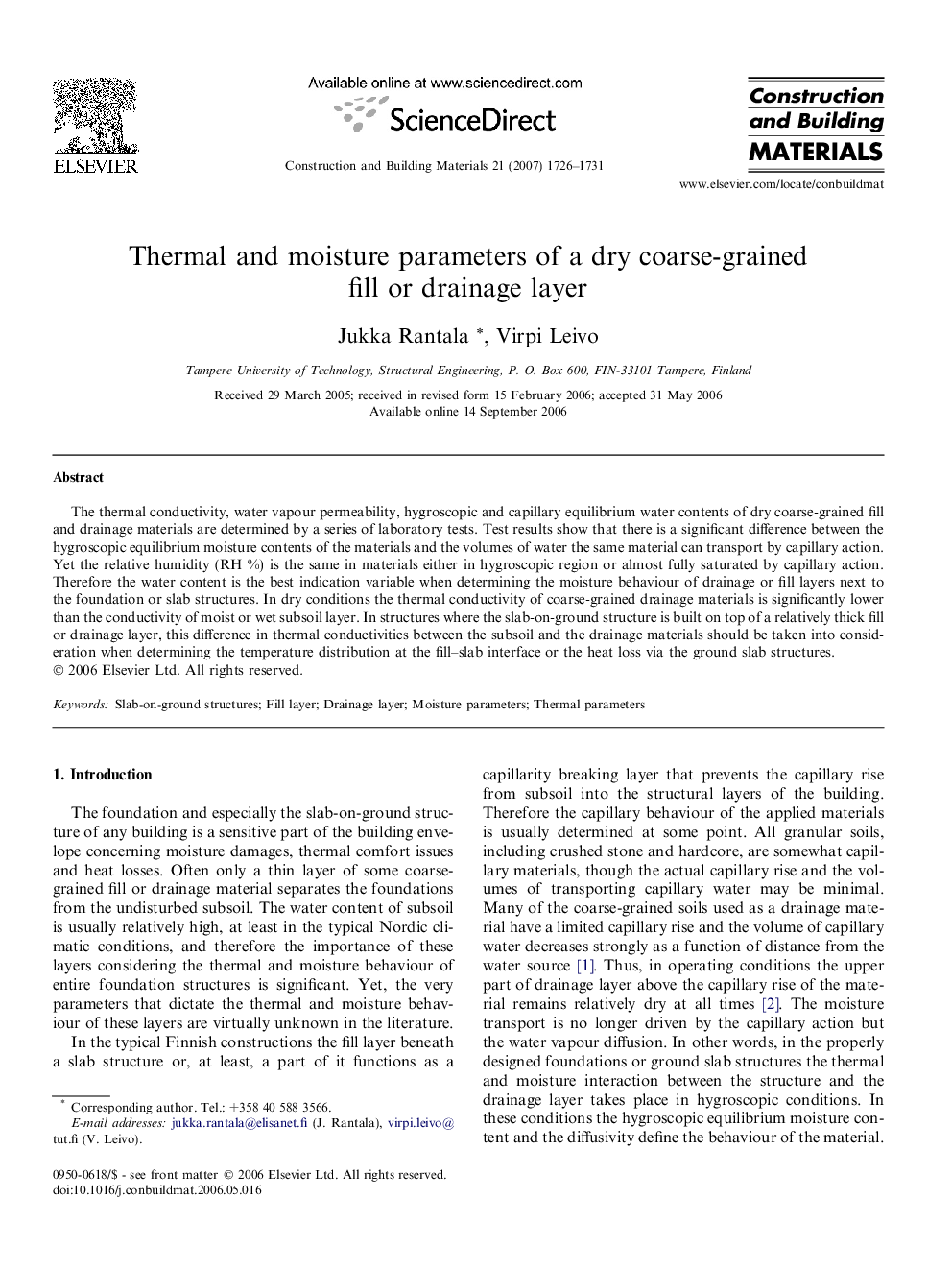| Article ID | Journal | Published Year | Pages | File Type |
|---|---|---|---|---|
| 261320 | Construction and Building Materials | 2007 | 6 Pages |
The thermal conductivity, water vapour permeability, hygroscopic and capillary equilibrium water contents of dry coarse-grained fill and drainage materials are determined by a series of laboratory tests. Test results show that there is a significant difference between the hygroscopic equilibrium moisture contents of the materials and the volumes of water the same material can transport by capillary action. Yet the relative humidity (RH %) is the same in materials either in hygroscopic region or almost fully saturated by capillary action. Therefore the water content is the best indication variable when determining the moisture behaviour of drainage or fill layers next to the foundation or slab structures. In dry conditions the thermal conductivity of coarse-grained drainage materials is significantly lower than the conductivity of moist or wet subsoil layer. In structures where the slab-on-ground structure is built on top of a relatively thick fill or drainage layer, this difference in thermal conductivities between the subsoil and the drainage materials should be taken into consideration when determining the temperature distribution at the fill–slab interface or the heat loss via the ground slab structures.
